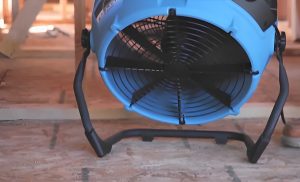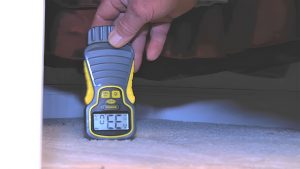Duration of Drywall Drying Process Following Water Damage
Water damage can have devastating effects on your home, and one of the most common areas affected by water damage is drywall. Whether it’s due to flooding, burst pipes, or water leaks, it is crucial to dry the affected drywall as soon as possible to prevent further damage and potential health hazards. In this article, we will discuss the factors that affect the drying time for drywall after water damage, and provide some helpful tips to speed up the process and avoid mold growth.

Factors Affecting Drywall Drying Time
- Extent of Water Damage The drying time for drywall after water damage is primarily determined by the extent of the damage. Light water damage may only require a couple of days for the drywall to dry, whereas more severe damage may take several weeks. The more saturated the drywall is, the longer it will take for it to dry completely.
- Type of Drywall Different types of drywall have varying drying times. Standard drywall, which is made of gypsum and paper, may dry faster than moisture-resistant or fire-resistant drywall, which contains additional additives that can prolong the drying process.
- Environmental Factors Environmental factors, such as temperature, humidity, and airflow, can also impact the drying time for drywall. Higher temperatures and lower humidity levels can accelerate the drying process, while colder temperatures and high humidity can slow it down.
- Drying Equipment and Methods The drying equipment and methods used can also affect the drying time for drywall after water damage. Using industrial-grade fans, dehumidifiers, and heaters can significantly speed up the drying process compared to relying on natural evaporation.
Drying Time Estimates and Tips
On average, drying time for drywall after water damage can range from two days to several weeks, depending on the factors mentioned above. Here are some tips to help speed up the drying process and ensure a successful restoration:
- Remove Excess Water Before beginning the drying process, use a wet vacuum or towels to remove as much excess water as possible from the affected area. This will not only minimize the amount of water that needs to evaporate but also reduce the risk of mold growth.
- Increase Air Circulation Promote air circulation by opening windows and doors, and use fans to create a constant flow of air in the affected area. This will help to evaporate moisture from the drywall more quickly.
- Use Dehumidifiers A dehumidifier can help to remove moisture from the air, which will speed up the drying process. Place a dehumidifier in the affected area and keep the doors and windows closed to maximize its effectiveness.
- Apply Heat Increasing the temperature in the affected area can speed up evaporation and help the drywall to dry more quickly. Use space heaters or turn up your home’s thermostat to promote faster drying.
- Monitor Progress It is essential to monitor the drying process regularly. Use a moisture meter to check the moisture content of the drywall and ensure that it is returning to normal levels. If the drying process seems to be taking longer than expected, consider consulting a professional for additional guidance.
- Replace Severely Damaged Drywall In some cases, the drywall may be too damaged to salvage. If the drywall is crumbling, warped, or shows signs of mold growth, it is best to remove and replace it to prevent further issues.

The drying time for drywall after water damage can vary greatly depending on the extent of the damage, type of drywall, environmental factors, and the drying methods used. While it is essential to dry the affected area as quickly as possible, it is also important to seek professional help with Water Damage Restore 247.
